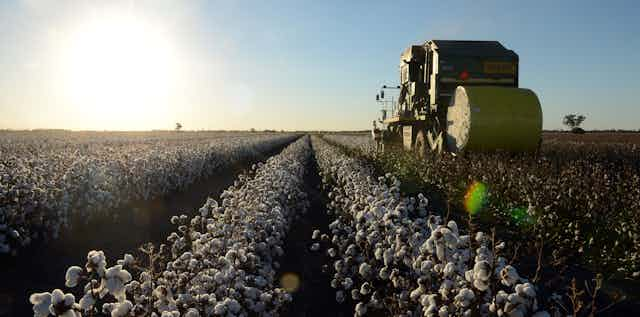Ten years ago, the garment industry’s worst industrial accident – the Rana Plaza collapse in Dhaka, Bangladesh – killed more than 1,100 workers and highlighted the travesty of conditions for millions of garment workers globally.
It spurred action to address exploitation, but for many workers little has changed.
Read more: Years after the Rana Plaza tragedy, Bangladesh's garment workers are still bottom of the pile
Just in the past few months, Britain’s Tesco supermarket chain has been accused of profiting from the “effective forced labour” of workers in Thailand (making Tesco-brand jeans), while the world’s biggest clothing retailer, China’s fast-fashion brand Shein, has been exposed for rampant human rights abuses.
Such incidents are meant to have been eliminated, as big brands are supposed to leverage their power to effect change in global supply chains. Australia’s Modern Slavery Act, for example, requires companies with more than A$100 million in annual revenue to publicly report on their efforts to ensure their supply chains are free of labour exploitation.
The expectation has been that pressure from consumers and investors will be enough for retailers (who profit the most from driving down production costs) to drive change. Campaigners for better conditions say these requirements are all too often a “fig leaf”, because audits can easily be fudged.
Limited attention has been given to what suppliers can do to ensure their products aren’t associated with exploitation.
In this, Australia’s cotton industry could make a valuable contribution, as the world’s fourth-largest exporter (behind the United States, Brazil and India). Most of this cotton goes to low-wage countries in Asia to be spun, knitted or woven into cloth, and then turned into garments.
Producers don’t have anywhere near the same influence of buyers. Yet there is more they can do protect the workers overseas who transform their product into material goods.
Extending producer responsibility
We received funding from the Cotton Research and Development Corporation (which is funded by the Commonwealth government and cotton growers) to look at ways the Australian industry can ensure its cotton is not tainted by exploitation.
The idea of sellers taking responsibility for what end users do with a product is not entirely new. The principle of “extended producer responsibility” is credited to a 1990 report by academic Thomas Lindquist.
Since then, producer responsibility (or “product stewardship”) obligations have become accepted as needed to reduce waste and environmental pollution.
In Europe, clothing retailers are being asked by regulators to address the waste caused by consumers disposing of their clothing. They will have to ensure their clothes are more durable and have less impact on the environment. Retailers will also need to provide consumers with information on how to reuse, repair and recycle clothing.

In Australia, the concept has also been applied to animal welfare, following a public furore in 2011 over animal cruelty in Indonesian abattoirs.
In response, the federal government introduced the Exporter Supply Chain Assurance System.
Exporters now require their buyers to provide information about the supply chain including the port of arrival, transport, handling and slaughter of the livestock.
There is also a push to make coal and gas exporters responsible for the greenhouse gas emissions released by the use of their products.
Taking a book-end approach
Our report examines how to increase transparency and traceability in cotton supply chains. Among other approaches, it looks at extending the Australian cotton industry’s existing certification scheme.
Read more: Blockchain can help break the chains of modern slavery, but it is not a complete solution
This scheme helps market Australian cotton on its sustainability credentials. Our idea is to extend the existing “chain of custody” checklist – which serves as proof of the cotton’s Australian origin - to include information about working conditions further along the chain in spinning, fabric and garment production.
This could potentially enable Australian growers to sell their cotton at a premium. Buyers already know Australian cotton isn’t tainted by child or forced labour, unlike cotton from many other exporter nations. This assurance could then be extended to the final products made from Australian cotton too.
There is, of course, some debate about the size of the market for ethical materials. But research and growing commitments to ethical standards by major retailers suggest it is growing.
A “book-end” approach that combines actions by producers and retailers is, in our view, the best way to rid the global cotton supply chain of exploitation.
The authors wish to acknowledge the other report contributors: Rowena Maguire and Justine Coneybeer (Queensland University of Technology), and Timo Rissanen and Karina Kallio (University of Technology Sydney).

